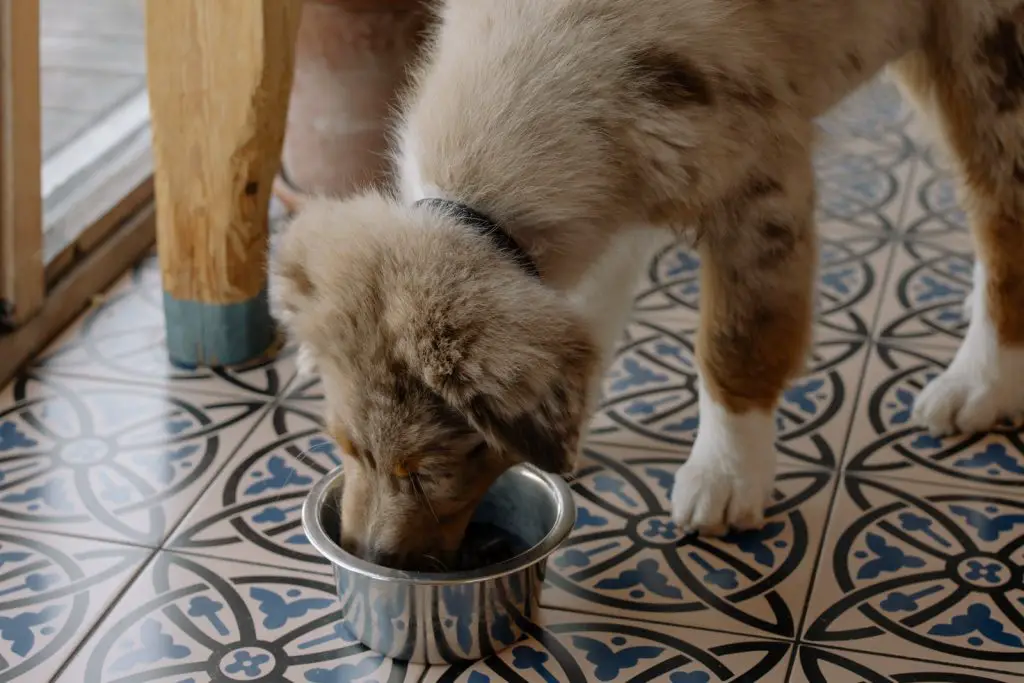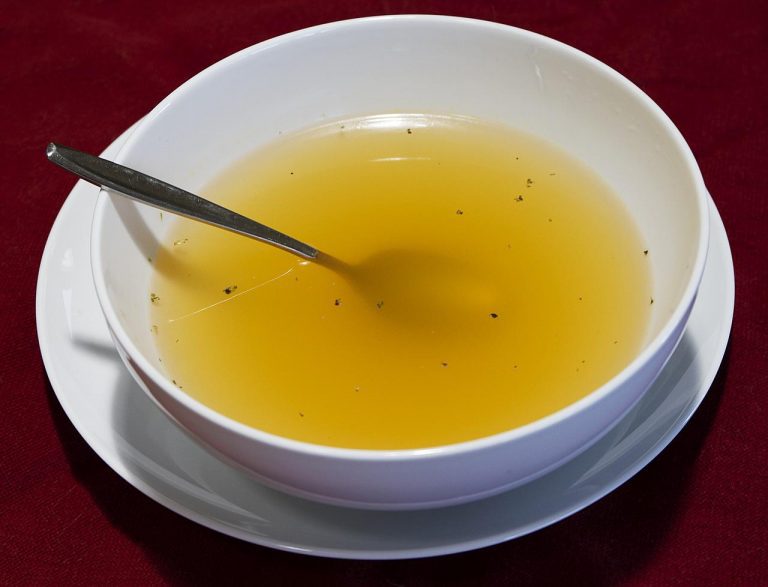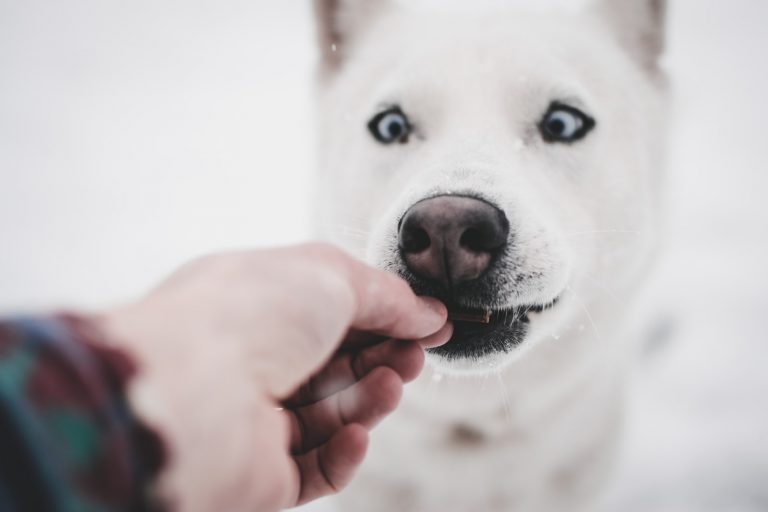Having a dog as a pet is a tiresome yet delightful job. Dogs are energetic, playful, funny, and do whatever they can to keep you from getting bored. Furthermore, they like to eat whatever they can find. It wouldn’t be wrong to say that dogs like to poke their noses and dip their teeth into whatever they can find.
On top of this, they are highly curious creatures, and sometimes their curiosity can be annoying. If you are a devout dog person, you can understand that dogs have a highly sensitive stomach, and the slightest quantity of the wrong food can affect their health negatively. To keep them from falling sick, you need to be very careful about what ends up in their tummy.
Certain things are not suitable for your dog’s health, especially balsamic vinegar. Most dog owners refrain from feeding their dogs acidic food items that contain balsamic vinegar, while some of them don’t. A small amount of food sautéed with balsamic vinegar tossed out of affection is fine, but it can be addictive for dogs.
Once they develop the taste, they long for it even more. When they are denied what they ask for, they set out to find it themselves, and that it is where the problem takes place. The answer to the question, “can dogs eat balsamic vinegar?” is no, they cannot eat balsamic vinegar. Balsamic vinegar is acidic and can hurt your dog’s stomach and cause acidity.

Can I Feed My Dog Balsamic Vinegar?
As discussed above, balsamic vinegar isn’t suitable for your fuzzy canines. To begin with, balsamic vinegar doesn’t have any nutritional value for dogs, so it is pointless to feed them sheer amounts of it. A small amount of balsamic vinegar won’t harm your dog’s health, but when it becomes a habit, the problem arises. But before we move towards the health effects of feeding balsamic vinegar to dogs, let’s talk about its types.
Conventional balsamic vinegar is produced in only two areas of northern Italy. To prepare balsamic vinegar, white grapes are cooked and fermented for weeks. To expedite the fermentation, bacteria are introduced. After the balsamic vinegar is ready, it is filled into wooden barrels, which are stored for twelve.
Original balsamic vinegar contains a DOP stamp, which signifies its origin as well as its quality. Just like wine, the older your balsamic vinegar is, the most expensive it will be. Unfortunately, not everyone can afford balsamic vinegar. Therefore, its cheaper variations are available in the marketplace.
These cheaper kinds of vinegar contain artificial sweeteners and colors, which make them even more dangerous for your four-legged buddies. Original balsamic vinegar contains just one ingredient—grape. Grapes in large amounts are harmful and can be extremely acidic for your dog.
Now, let’s talk a look at some of the downsides of feeding balsamic vinegar to your dog.
Interestingly, balsamic vinegar is less acidic than other forms of vinegar. However, it does possess the ability to affect the enamel of the teeth. Remember, any food item or drink that has a ph level of 4 or less can affect tooth enamel. Unluckily, the ph level found in balsamic vinegar is somewhere around 4.
The bad thing about balsamic vinegar is the acid it contains. However, the cheaper qualities of balsamic vinegar have less acid, but because of artificial ingredients, they aren’t suitable for your dog either. If your dog has consumed a significant amount of balsamic vinegar, make it drink lots of water to soothe the effect of acid contained within.
Another downside of feeding balsamic vinegar to your dog is the ample amount of lead it contains. Consuming too much lead can cause lead poisoning in dogs, which is also known as plumbing. Lead in high quantity can affect the gastrointestinal tracts and nervous system of your dog.
If a pregnant female dog consumes a significant amount of lead, the likelihood of her new-born pups having health issues increase. Studies have shown that lead poisoning is fatal, and if left untreated, it can kill your dog. If you suspect that your dog has lead-poisoning, look for the following symptoms.
- Muscle tremors
- Vomiting
- Extreme thirst
- Reduced appetite
- Abdominal pain
- Frequent urination
- Lethargy
- Aggression
- Anxiety
- Deafness
- Shortness of breath
- Diarrhea
- Blindness
- Tremors
The moment your dog exhibits any of the symptoms above, make sure to take it to the vet right away.
Compared to other forms of vinegar, balsamic vinegar has more calories. Too many calories aren’t healthy for dogs and can make your dog gain weight. An obese dog is mostly lazy and loses its natural energy and playfulness.
Why Is Balsamic Vinegar Bad for Your Dog?
As discussed above, balsamic vinegar is made from grapes and nothing else. Grapes are acidic, and too many of them can have a negative reaction to dogs. Let’s discuss some of the downsides of feeding grapes to your dog.
A grape or two doesn’t harm your dog in a significant way. However, when consumed in bulk (32 grams approx), grapes can be detrimental to your dog’s health. Both grapes and raisins are toxic to dogs, and can even cause acute kidney failure.
The toxicity of grapes and raisins also affects the way your dog urinates. However, not every dog behaves the same way when they are fed grapes or raisins. Some of the most common symptoms of grape and raisin poisoning in dogs are mentioned below.
- Foul breath
- Tremors
- Oral ulcers
- Coma
- Seizures
- Diarrhea
- Vomiting
- Dehydration
- Disturbed urination
- Lack of appetite
- Oliguria
- Lethargy
- Quietness
If your dog suffers from grape poisoning, your job is to induce vomiting. Remember, your dog needs to puke quickly before the toxins in its body start doing what they are supposed to do. However, in the following scenarios, vomiting might not be such a good idea.
- If you aren’t sure about what your dog has digested
- If your dog has passed out
- If your dog is distressed or in a state of shock
- If the dog has trouble breathing
If the dog has already thrown up, make sure it doesn’t vomit again. If vomiting doesn’t help, it is better to call the vet. In case the vet asks you to induce vomiting at home, follow the below-mentioned method.
- If the dog hasn’t eaten anything for a day or two, the chances are that the food you are giving is making it sick. Offer it some food, and if the dog is genuinely sick, it will throw up merely at the sight of it.
- You can also use a syringe to squirt 45 ml of hydrogen peroxide towards the back of your dog’s mouth. This will surely make your dog throw up. If it doesn’t, repeat the procedure using the same amount of hydrogen peroxide.
Here is a video on grape poisoning in dogs.

Signs Your Dog Is Experiencing an Acidic Reflux Due to Balsamic Vinegar
As discussed above, grapes and other food items that are used to make balsamic vinegar can make your dog experience acidic reflux. An acidic reaction in dogs can lead to a feeling of heartburn, but unfortunately, unlike us, they can’t express the feeling through words.
An acidic reaction can disturb your dog’s digestion and can also make them nauseous. As a responsible owner, you must be able to identify the symptoms of acidic reflux, some of which are mentioned below.
- After a meal, the dog might feel lethargic and may prefer to lay down quietly instead of wanting to play around.
- The dog may gag or have a chronic dry cough after it is done eating.
- The dog may eat less or lose its hunger altogether.
- Your dog may lose weight.
- Every time your dog swallows, it may whine with pain or discomfort.
- The dog may just throw up.
- The dog may lick more than usual. The dog may lick objects like carpets, curtains, furniture, and air instead of its skin.
- The dog may drool heavily or may even run a fever.
Treating a Dog with Acidic Reflux
Here are some treatment options for dogs suffering from acidic reflux.
- If your dog is suffering from gastric reflux, make sure it doesn’t eat anything for a day or two. After that, feed it small portions more frequently.
- Try not to feed your dog too many proteins and dietary fats, for they increase gastric activity in dogs.
- If the vet allows it, feed your dog gastrointestinal prokinetic agents. These medicines aid the movement of food throughout your dog’s intestine. They also strengthen the sphincter muscles, which are found towards the opening of your dog’s stomach.
Signs Your Dog Has an Upset Stomach Due to Balsamic Vinegar
Besides causing acidity, balsamic vinegar also messes up your dog’s stomach. Unfortunately, we fail to interpret the signs of an upset stomach in dogs and delay the treatment, which makes the problem worsen with time. To make things easy for you and your dog, we have put together a list of signs that show that your dog’s stomach is messed up.
- Gurgling sounds from your dog’s tummy
- Excessive gassiness
- Lack of appetite
- Diarrhea and vomiting
- Eating grass to eliminate discomfort
- Severe dehydration from diarrhea and vomiting
- Thirst and burping
- Bad breath
- Depression, lethargy, and mood swings
Some of the more severe signs of an upset stomach in dogs are mentioned below:
- Sudden onset of vomiting
- Blood in vomiting
- Digested blood in vomit, similar to coffee grounds
- Yellowish vomiting with bile in it
- Abdominal pain can worsen with time, thus disturbing your dog’s posture.
- Lethargy and weakness
- Severe gastritis, causing blooding in your dog’s stool
- A dull-looking coat of fur
- Blood loss and pale-looking mucous membranes
- Excessive drooling
How to Treat a Dog With an Upset Stomach Due to Balsamic Vinegar?
Do you suspect that your dog has an upset stomach? If your answer is yes, make sure to monitor your dog for some time. During this time, the condition may just improve. Meanwhile, make sure your dog drinks plenty of water. Don’t leave your dog by a pale of water. Stay there to ensure whether or not it is drinking.
The first thing you need to do is figure out what your dog has been munching on for the past few days. Some food products aren’t suitable for dogs, especially those containing balsamic vinegar. If foods containing balsamic vinegar are consumed in large amounts, they can be detrimental to your dog’s health. Furthermore, an upset stomach is also a sign of aging in dogs. The digestive system of an old dog isn’t as efficient as that of a younger one.
If your dog has an upset stomach, the best thing that you can do is not feed your dog at all, at least for some time. However, when you start feeding your pooch again, make sure to give them something straightforward and bland. Try to provide them with the food that you have prepared instead of packaged dog food. Shredded boiled chicken and boiled rice are good options, too.
Make sure your dog’s food doesn’t contain fat or acidic content. Some of the most acidic ingredients for dogs include onion and garlic. For an upset stomach, oatmeal is an excellent option to consider. Oatmeal is relaxing to your dog’s gut and provides them with the right blend of minerals and fiber, which are essential to your dog’s gastrointestinal well being.
Once your dog’s stomach isn’t upset, try sticking to simpler foods. Try to incorporate some healthy probiotics to your dog’s meals. These probiotics keep your dog’s stomach healthy by maintaining the bacterial balance within.
Sometimes, when dogs are sick, they tend to eat grass. If you catch your dog eating grass, let them eat it because that relieves the discomfort your dog feels. If the symptoms of an upset stomach don’t go away even after 24 hours, make sure to consult the vet. If these symptoms don’t go away, the stomach problem could worsen, thus leading to anemia, dehydration, weight loss, and fever.
Apple Cider Vinegar—An Alternative to Balsamic Vinegar
By now, you must have realized how detrimental balsamic vinegar is to your dog’s health. However, apple cider vinegar isn’t as harmful and can benefit your dog in several different ways.
The best thing about apple cider vinegar for dogs is that it aids in digestion, thus keeping your dog’s stomach healthy. Dogs that eat a grain-based diet are more likely to have a problem digesting food. This is where apple cider vinegar can be a game-changer.
Sautee some veggies in apple cider and allow them to sit in the fridge for some time. Add a spoonful of these veggies to your dog’s meals. You can even add a few teaspoons of this vinegar to your dog’s drinking water.
Experts say that apple cider vinegar is a great skincare product for your fuzzy buddies, as it keeps fleas and ticks at bay. Just mix some apple cider vinegar in water in a spray bottle and spray it on your dog’s fur coat. Adding a few drops of apple cider vinegar to your dog’s drinking water is also helpful in the elimination of fleas and ticks from your dog’s fur coat.
Dogs with floppy ears are more prone to developing ear infections. Interestingly, apple cider vinegar serves as a powerful ear cleaner. Mix equal parts of water and apple cider vinegar, and apply it to your dog’s ears with a tissue paper, cotton suave or cotton bud. Using this mixture to clean your dog’s ears will balance the ph level. If the dog’s ears are too sore, consider diluting the solution just a little bit.
Apple cider vinegar serves as a powerful remedy for urinary tract infections. However, before using this as a cure, determine the pH level in your dog’s urine. If the ph level of your dog’s urine is 7, you can move forth with the vinegar treatment. However, if the pH level is less than seven, giving them vinegar would only make the problem worse.
Final Thoughts on Can Dogs Eat Balsamic Vinegar?
As discussed in the beginning, your dogs are highly curious animals. They like to take a bite of any food item they come across. Therefore, your job is to keep a strict eye on them and limit their access to the kitchen and the dining area.
Furthermore, use the symptoms mentioned in this article to figure out the health condition of your dog. Last but not least, don’t forget to take your dogs out for a walk and never skip out on a regular visit to the vet.







